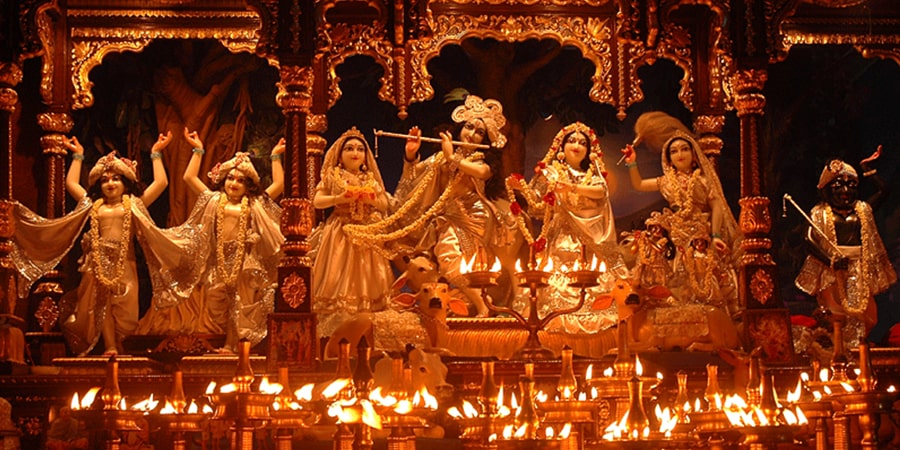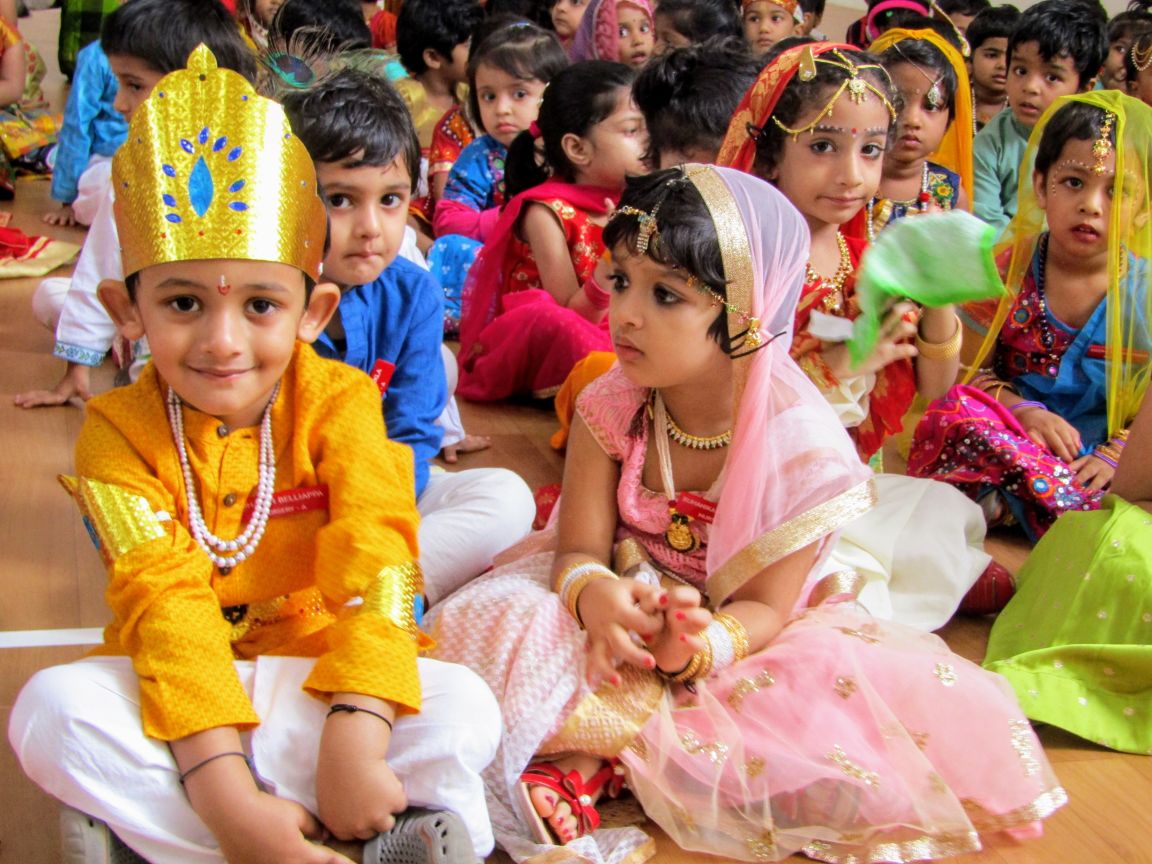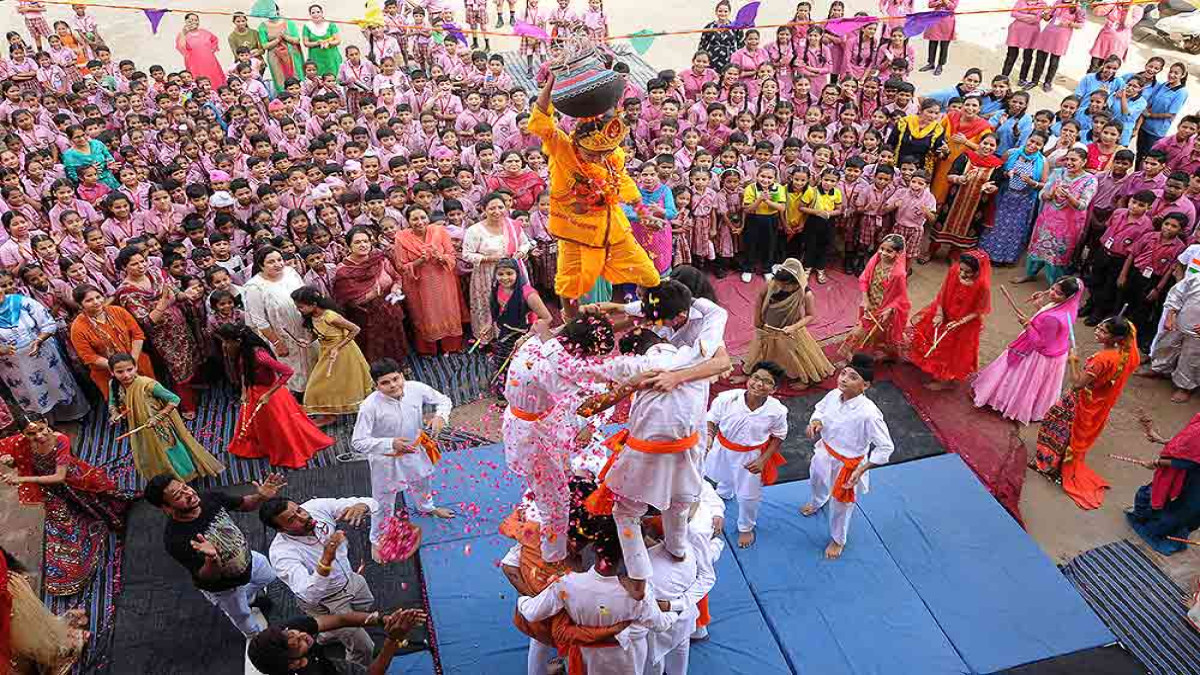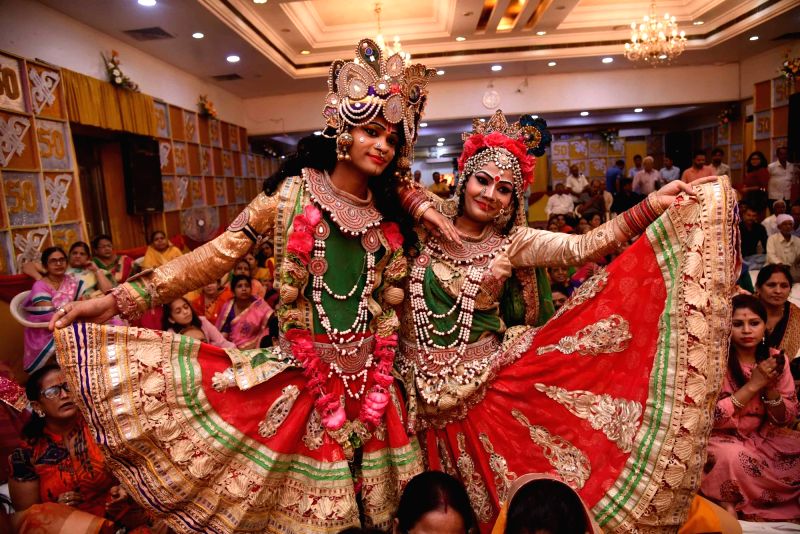| Janmashtami, Hindu festival celebrating the birth (janma) of the god Krishna on the eighth (ashtami) day of the dark fortnight of the month of Bhadrapada (August–September). The number eight has another significance in the Krishna legend in that he is the eighth child of his mother, Devaki. The occasion is observed especially in Mathura and Vrindavan (Brindaban), the scenes of Krishna’s childhood and early youth. On the preceding day, devotees keep a vigil and fast until midnight, the traditional hour of his birth. Then the image of Krishna is bathed in water and milk, dressed in new clothes, and worshipped. Temples and household shrines are decorated with leaves and flowers; sweetmeats are first offered to the god and then distributed as prasada (the god’s leftovers, which carry his favour) to all the members of the household. The devotees of Krishna commemorate the events of his birth by preparing elaborate representations of Mathura, where he was born, the Yamuna River, over which he was transported to safety, and Gokul (ancient Vraja), the scene of his childhood, using small images of the god, the other participants, and the animals and birds of the forest. Pots of milk are hung from tall poles in the streets, and men form human pyramids to reach and break the pots—this in imitation of Krishna’s childhood play with the cowherd boys, when they stole the curds hung out of reach by their mothers. The festival is also a time for group singing and dancing. The occasion is observed especially in Mathura and Vrindavan (Brindaban), the scenes of Krishna’s childhood and early youth. On the preceding day, devotees keep a vigil and fast until midnight, the traditional hour of his birth. Then the image of Krishna is bathed in water and milk, dressed in new clothes, and worshipped. Temples and household shrines are decorated with leaves and flowers; sweetmeats are first offered to the god and then distributed as prasada (the god’s leftovers, which carry his favour) to all the members of the household. |
 |
|
Among all of them, the most widely accepted view is that Lord Krishna is the eighth incarnate of Lord Vishnu. We all have known from Mahabharata that the birth of Lord Krishna happened to kill the demon Kansa who happens to be his maternal uncle. Whenever there is some imbalance in the universe regarding peace and prosperity, it is said that Lord Vishnu comes to save the humanity from the hands of demons and goons.Historians and scholars say that Lord Krishna took birth in a cellular jail in Dwapar Yug biologically to Vasudeva and Devaki. But Vasudeva had to cross the Yamuna River in a stormy night to pass on his child to a friend so save the child from the evil hands of Kansa. So, technically, Maiya Yashodha and Nanda of Gokul region of Mathura were the foster parents of Lord Krishna.Now this Lord Krishna was a wonder child and his skills were noticed since childhood only. People started believing that this small boy named Krishna is among the commoners to save them from all tumultuous situations. Slowly, people of Nandgaon started celebrating the birth of Krishna in a grand way as they believed this day to be a fortunate one.We can say that this festival initially originated in Gokul and slowly engulfed the Mathura region and later on the whole Uttar Pradesh state. And now even after 1000 years, the whole country celebrates the birth of Lord Krishna as he is the epitome of love, faith, friendship, and peace. |









